 Regiment: 18th Battalion (Arts & Crafts) King’s Royal Rifle Corps.
Regiment: 18th Battalion (Arts & Crafts) King’s Royal Rifle Corps.
Date & place of birth: 13 January 1886 at Southampton
Date & place of death: 7 October 1916, aged 30, at Flers, Somme, Northern France
Cecil Christmas was an hotelier by profession, who had also played football as an amateur for Southampton F.C. before the war. He was commissioned in March 1916, and died of wounds seven months later.
Family
Edwin Cecil Russell Christmas (known as “Cecil”) was born at the Edinburgh Hotel, 1 St Mary’s Road, Southampton on 13 January 1886, the second child of Edwin Christmas (1847–1911) and his wife Margaret Abigail née Russell (1859–1910).
Edwin Christmas was born in Farringdon, near Alton in Hampshire in November 1847, the son of an agricultural labourer. At the time of the 1871 census, he was serving in the Royal Navy on board HMS Duke of Wellington at Portsmouth Harbour, as the captain’s steward. HMS Duke of Wellington had been built in 1852 as a 131-gun first-rate ship of the line, but had been overtaken by technical improvements in Royal Navy vessels, and in 1869 she became the flagship to the Port Admiral at Portsmouth.
Edwin was discharged from the Royal Navy in July 1878, and soon afterwards joined his older brother, William Foster Christmas (1884–1940) at the Edinburgh Hotel at 1 St Mary’s Road, Southampton. At the 1881 census, Edwin was living at the hotel with his brother, sister-in-law and family (three daughters) and two live in staff.
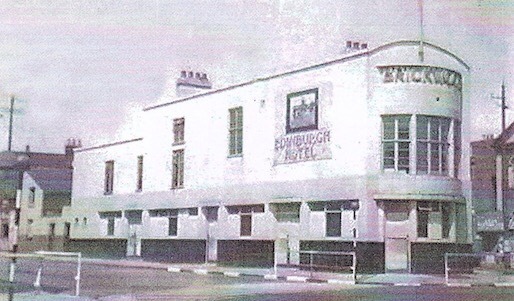
The Edinburgh Hotel (sometimes referred to as the Edinburgh Commercial Hotel) stood at the junction of St. Mary’s Road and St Andrew’s Road at the Six Dials junction, but has long since disappeared under the modern highway network.
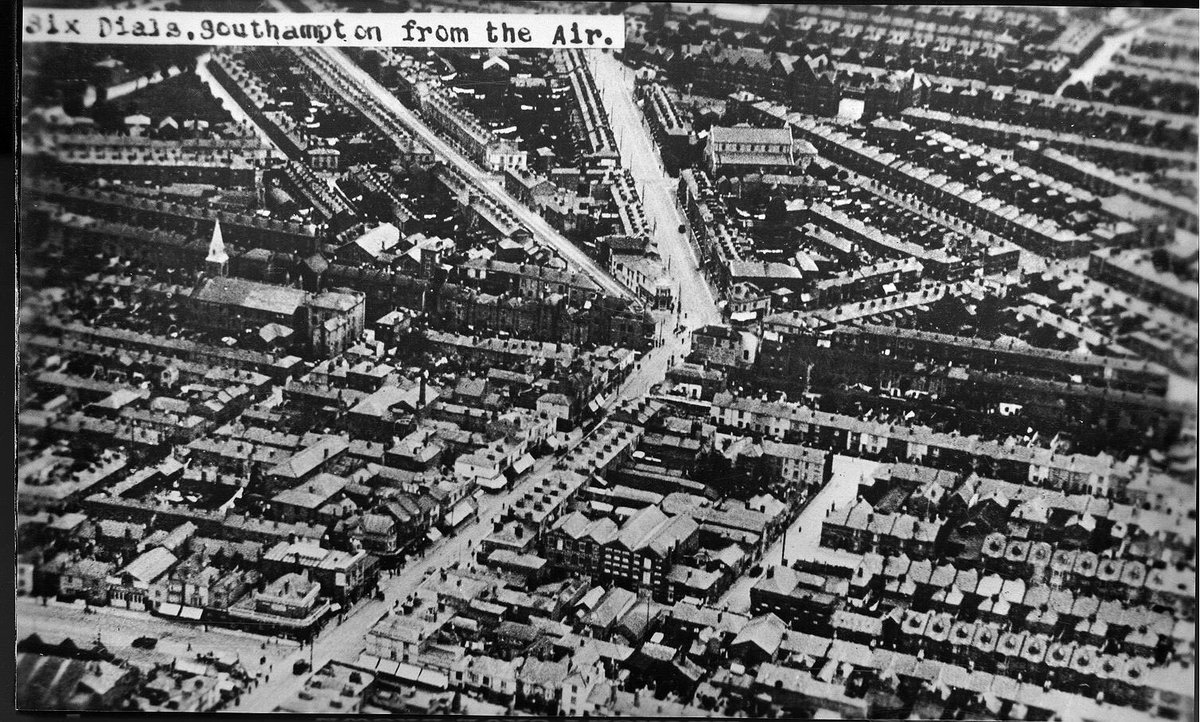
In June 1882, William’s wife, Fanny Eveline née Russell, died and shortly afterwards Edwin took over as licensee at the Edinburgh Hotel.
In early 1883, Edwin married Fanny’s younger half-sister, Margaret Abigail Russell, at Portchester. Margaret and Fanny’s father, William Russell (1814–1901) was described as the proprietor of Portchester Castle.
Edwin and Margaret’s first child, William Foster Christmas was born in January 1884, followed by Cecil on 13 January 1886. On his birth certificate, his names are recorded as Edwin Vincent Russell Christmas, but when he was baptised at St Mary’s Church, Portchester on 22 September 1886, the second name was amended to Cecil.
The couple had a further seven children, four boys and three girls, including Jessie who was born in March 1891, but only lived for a few weeks.
Cecil Christmas was educated at Banister Court School in Banister Road, Southampton. The school had been founded in 1867 by the Reverend George Ellaby and amongst its former pupils was Charles Miller, the son of a Scottish engineer and a Brazilian mother, who played a few football matches for Southampton F.C. in the 1890s. Following his return, Miller is credited with introducing football to Brazil, and was instrumental in setting up the football team of the São Paulo Athletic Club.
During Cecil’s time at the school, the headmaster was Christopher George Ellaby (1859–1931), the son of the founder. Cecil was a keen sportsman, and in July 1899, he and his partner, W. MacDonald, won the final of the Fives competition. Two years later, he reached the senior singles final but was defeated in a close fought match with P. Keene. Cecil was also a good cricketer (“one of the best batsmen the school had in recent years”) and footballer.
Cecil’s father, Edwin Christmas, died on 21 January 1911, following which he and his elder brother, William, took over the licence of the Edinburgh Hotel, although William was now resident at 166 St Mary’s Road. At the 1911 census, Cecil, aged 23, was resident at the Edinburgh Hotel, with his 20-year old brother, Harold, and their 11-year old sister, Marjorie, together with a 29-year old cousin, Margaret Christmas, who acted as housekeeper, and three live-in members of staff.
Cecil Christmas was unmarried.
Football career
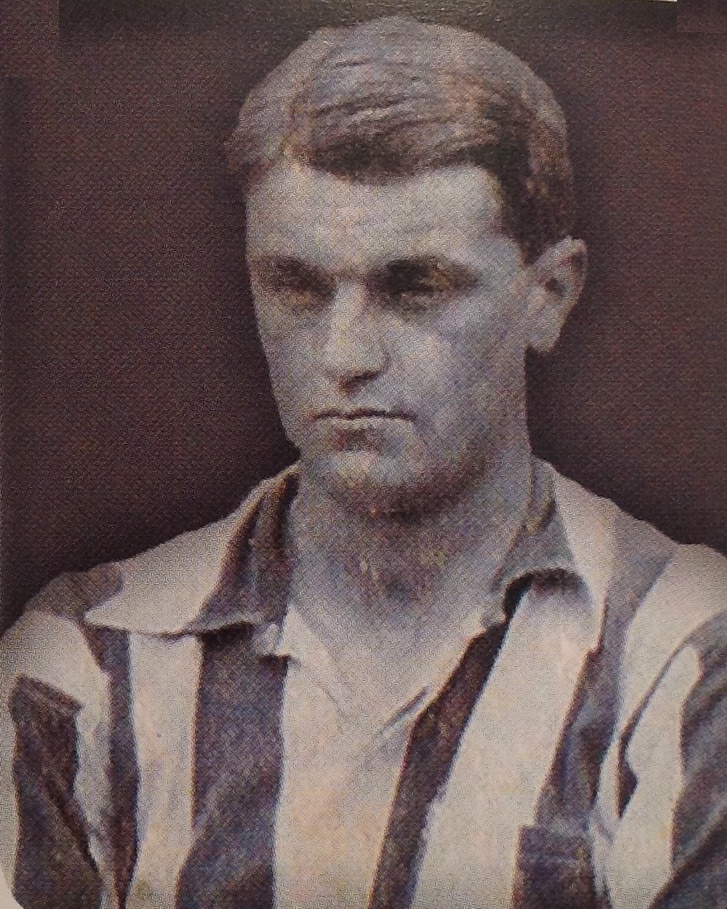 Cecil first played for Southampton Football Club as an amateur in the 1908–09 season, when he signed on Hampshire League forms, but left in 1910 to focus on his involvement in the family business.
Cecil first played for Southampton Football Club as an amateur in the 1908–09 season, when he signed on Hampshire League forms, but left in 1910 to focus on his involvement in the family business.
In March 1912, the reserve team manager, George Carter persuaded Cecil to return to the club, this time on Southern League forms, as the club had recently suspended their two regular forwards, Henry Hamilton and Andrew Gibson, for serious breaches of club discipline. Cecil was immediately pressed into action with the first-team, making his debut on 16 March away to Crystal Palace, which ended in a 3–1 defeat. He retained his place for the next match a week later, this time at The Dell, against Luton Town, when his “pace and dribbling skills” helped his side to a 3–1 victory. Unfortunately, a serious injury prevented Cecil from finishing the match. Although the club retained his services for the following season, he made no further first-team appearances, and his football career was over.
Masonic career
Cecil’s brother, William was initiated into Southampton’s Lodge of Peace and Harmony No 359 in October 1912. Cecil followed his brother into the lodge, when he was initiated on 18 January 1915. Cecil was initiated alongside 35-year old builder, Walter Brazier.
Both men were passed to the second degree on 15 February. Walter Brazier was raised to the third degree in April, but Cecil’s raising was delayed, and he became a Master Mason on 21 June 1915.
Military service
On 30 June 1915, Cecil enlisted at Dukes Road in Bloomsbury, London, joining the 1/28th (County of London) Battalion (Artists Rifles), London Regiment as Private No. R/4150. The Artists Rifles had been originally founded in 1859 as a volunteer regiment, but in 1908 became part of the London Regiment as the 28th Battalion. Early in 1915, a separate Officer Training Corps had been established, to which Cecil was transferred. The Corps trained at Hare Hall in Gidea Park, in East London.
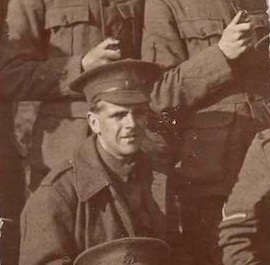 On 6 March 1916, Cadet Cecil Christmas was commissioned as a Second Lieutenant into the 18th (Service) Battalion (Arts & Crafts) King’s Royal Rifle Corps., with his promotion being made retrospective to 20 December 1915. His character reference was supplied by his former headteacher, Christopher Ellaby.
On 6 March 1916, Cadet Cecil Christmas was commissioned as a Second Lieutenant into the 18th (Service) Battalion (Arts & Crafts) King’s Royal Rifle Corps., with his promotion being made retrospective to 20 December 1915. His character reference was supplied by his former headteacher, Christopher Ellaby.
The 18th (Arts and Crafts) Battalion, Kings Royal Rifle Corps was raised at Gidea Park on 4 June 1915 by Major Sir Herbert Raphael. After initial training close to home, the battalion joined the 122nd Brigade, 41st Division at Witley, near Guildford, in October. In November, they moved to Aldershot, in February to Witley before returning to Aldershot for final training.
They proceeded to France, sailing from Southampton on the evening of 2 May 1916, landing on the following morning at Le Havre, from where they travelled by train to Godewaersvelde, a few kilometres from the Belgian border. After a few days in billets at Moolenaker, 8 km south, the battalion moved to Steentje, 4 km south of Bailleul.
On 30 May, the battalion had their first experience of the front line when they took over a section of the trenches at Ploegsteert Wood, just across the border in Belgium. This had been the scene of fierce fighting in the early part of the war, but by 1916 it was considered to be a ‘quiet’ sector, and at first the battalion had little engagement with the enemy with few casualties, although on 10/11 June, three men were killed when the trenches came under bombardment. On 25 June, two officers and a company sergeant major were killed when a number of rifle grenades landed in the front line trenches.
On 30 June, the battalion launched a raid on the enemy lines supported by artillery bombardment, to which the Germans retaliated in kind resulting in the deaths of seven men from the 18th KRRC, with several more wounded.
The battalion remained in the front line until 28 July, when they withdrew to billets at Papot to the north-west of Nieppe. This was only a brief respite and on 3 August the battalion returned to the trenches north of Ploegsteert Wood, where they remained until relieved on 9 August with no serious casualties. After a week in billets at Papot, they were then withdrawn from the front line and marched to Bailleul (14 km west).
On 24 August, they travelled by train to Abbeville (110 km south west), from where they marched to billets at Brucamps (17 km east). After two weeks training at Brucamps, the battalion was moved 55 km east to Fricourt, where they returned to the trenches on 14 September. The following day, the battalion took part in an assault on the village of Flers; although the battalion secured their objectives, this came at a heavy cost. The battalion war dairy records the casualties as:
Officers – 7 killed, 14 wounded. O.R. – 57 killed, 227 wounded, 3 died of wounds, 59 missing (Total 346)
The Commonwealth War Graves Commission lists 133 members of the 18th Battalion, Kings Royal Rifle Corps as killed on 15 September 1916, with a further 9 dying over the following three days. Among the casualties was the battalion’s Commanding Officer, Lt. Col. Charles Peter Marten, who was killed together with his Adjutant and the Battalion Signalling and Trench Mortar Officers by a high explosive shell that landed in his H.Q. dug-out.
The Battle of Flers–Courcelette was the first in which the allied forces used tanks in battle. Although the British succeeded in capturing the two villages, casualties were high with nearly 30,000 men killed between 15 and 22 September.
On 19 September, the battalion were withdrawn to billets at Dernancourt, near Albert, 18 km behind the front line, where they remained until 2 October. On 2 and 3 October, the battalion marched eastwards in heavy rain, reaching the trenches north of Delville Wood, 5 km south of Flers, at 10 pm on 3 October.
On the evening of 4 October, the battalion supported the 11th Battalion Royal West Kent Regiment and the 15th Battalion Hampshire Regiment in an attack on the enemy defences in front of the village of Le Sars. Although the battalion war diary describes this as “entirely successful”, the battalion incurred heavy casualties, with 100 men killed, including 2nd Lieutenant Percy Mellows Cook. (Percy Cook was also a Freemason, who had been initiated into Wallasey Lodge No. 3036 in Cheshire in 1908.)
Death and commemoration
On 7 October, the battalion re-launched the attack on the German lines south of Le Sars in support of the 11th Royal West Kent and 15th Hampshire Regiments. The war diary reports the events of the next two days:
The attack commenced quite successfully, zero hour being 1:45 pm. The battalion was held up by machine gun fire. At dusk, a new line was dug two hundred yards in front of original front line. The Flers Road was heavily shelled on the 7th and our transport had casualties of four drivers and several horses killed.
Casualties – Officers killed: 2 (2/Lt. ECR Christmas, 2/Lt CH Yorke, Royal West Kent, attached). Wounded: 2 (2/Lt LJ Limmer, 2/Lt SF Peshall). Missing: 2 (2/Lt W Ridgway, 2/Lt JH Laycock) Men: 78
Including those on 4 October, the war diary records total casualties among the non-officer soldiers of 178 (38 killed, 121 wounded and 19 missing). The CWGC record 65 men killed from the 18th KRRC between 2 and 10 October 1916. 2nd Lieutenants William Ridgway and Joseph Harold Laycock were later found to have been killed in the battle. Both men, together with Percy Mellows Cook, were commissioned on the same day as Cecil Christmas.
On 12 October, Cecil’s brother William (now the licensee at the Shirley Hotel, Southampton) received a telegram reporting that he had been wounded on 7 October. Sadly, this was followed by a second telegram received on 17 October:
Deeply regret to inform you that 2 Lt ECR Christmas, Kings Royal Rifles, previously reported wounded October 7th is now reported to have died of wounds. The Army Council express their sympathy.
Cecil’s body was not recovered from the battlefield and he is one of over 72,000 men commemorated on the Thiepval Memorial to the Missing of the Somme. He is also commemorated on the Cenotaph in Southampton’s Watts (West) Park and on a memorial at St Mary’s Church, Portchester.
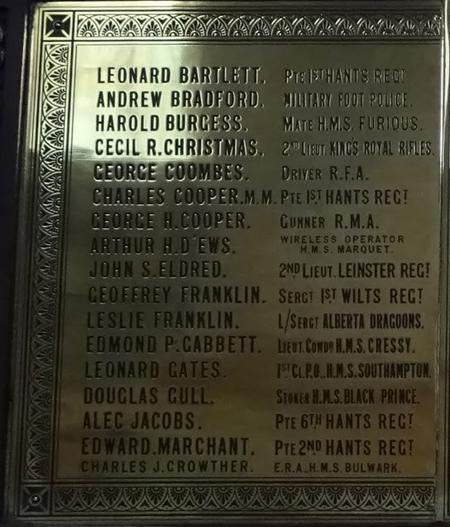
.As well as the Masonic Roll of Honour, his name is also recorded in the KRRC Memorial Book, kept at Winchester Cathedral. In November 2018, a memorial was unveiled at St Mary’s Stadium. Southampton to former Southampton F.C. Players killed in the two world wars, on which Cecil’s name is also recorded.
Cecil’s sister, Hilda, was appointed as administratrix of his estate, which was valued at £3,460.
At the time of his death, Cecil was still the licensee at the Edinburgh Hotel. On 15 January 1917, the licence was formally transferred to his brother, William.
Sources
Ancestry.co.uk
1891 England Census
1901 England Census
1911 England Census
British Army WWI Medal Rolls Index Cards, 1914-1920
England & Wales, National Probate Calendar (Index of Wills and Administrations), 1858-1966, 1973-1995
United Grand Lodge of England Freemason Membership Records, 1751–1921
UK, Army Registers of Soldiers’ Effects, 1901-1929
UK, Soldiers Died in the Great War, 1914-1919
UK, WWI Service Medal and Award Rolls, 1914-1920
Bennett, Christine: The Life of “Uncle Cecil” Christmas
Chalk, Gary; Holley, Duncan; Bull, David (2013). All the Saints: A Complete Players’ Who’s Who of Southampton FC. Hagiology Publishing. p. 42.
Chalk, Gary; Holley, Duncan (1987). Saints – A complete record. Breedon Books. p. 237
CWGC Casualty Details: Christmas, Edwin Cecil Russell
The End of the Pub: Closing Pubs of Southampton: Edinburgh Hotel, 1 St Mary’s Road, Southampton
Find My Past: Hampshire, Portsmouth Baptisms
Football and the First World War: Edwin Cecil Russell Christmas: Service Record
Great War Forum:
2nd Lieut ECR “Cecil” Christmas, KRRC
Discrepancy between War Diary and CWGC records
Hampshire Advertiser:
17 May 1899. The Stella Disaster
12 August 1899. Banister Court School
21 October 1916. The Death of Lieut. Cecil Christmas
20 January 1917. Licencing Business
23 February 1918. Local Wills
13 September 1919. Edwin Christmas deceased. Sale of Villa, Cottages …
Imperial War Museum, Lives of the First World War: Edwin Cecil Russell Christmas
London Gazette:
17 March 1916 Issue: 29512 Page: 2942
24 March 1916 Supplement: 29521 Page: 3272
Masonic Roll of Honour: 2nd Lieutenant Edwin Cecil Russell Christmas
The National Archives:
WO 339/55803: 2/Lieutenant Edwin Cecil Russell Christmas The King’s Royal Rifle Corps.
WO 95/2635/3: 18 Battalion King’s Royal Rifle Corps War Diary
Portsmouth Evening News:
15 May 1891. Portchester Castle will be open on Whit Monday
25 February 1901. Deaths
20 May 1915. Schoolmaster’s Wedding
Somme Roll of Honour: 18th Battalion King’s Royal Rifle Corps (Arts and Crafts)
Southampton Cenotaph: Edwin Cecil Russell Christmas
Wikipedia: Cecil Christmas
Wartime Memories Project: 18th (Arts and Crafts) Battalion, Kings Royal Rifle Corps in the Great War
Photograph credits
Portrait in Uniform: IWM. Lives of the First World War
Edinburgh Hotel: The End of the Pub
Six Dials: Twitter: Historic Southampton
Cecil Christmas in uniform: Christine Bennett
As a Southampton footballer: All the Saints: A Complete Players’ Who’s Who of Southampton FC.
Memorial Plaque: IWM. Lives of the First World War